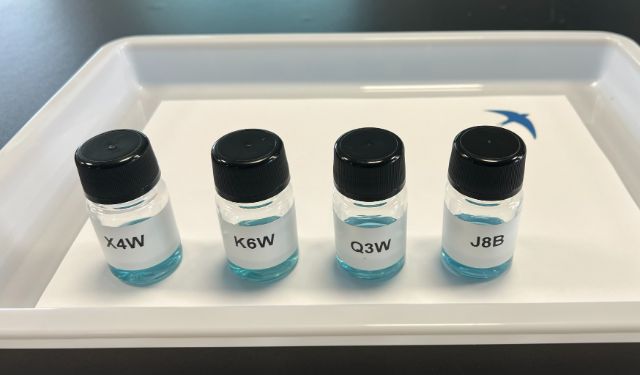Tetrad testing is a powerful and effective tool in product testing, offering increased sensitivity and reliability over traditional methods.
By adopting this technique, clients can enhance their quality control processes, develop superior products, and stay ahead in a market facing increasing regulation and rising product costs. Whether you are a quality control specialist, develop new fragrances, make biscuits or baked beans - the tetrad is a valuable addition to your sensory evaluation toolkit. But what is a Tetrad test, how does it work, and why is it such a valuable tool?
What is a Tetrad Test?

The tetrad (meaning a set of 4) is a type of sensory discrimination test used to determine whether there are perceivable differences between two products. Unlike similar, traditional methods such as the triangle test (where participants are asked to identify the odd one out among three samples), the tetrad method involves presenting participants with four samples.
Participants are instructed to group the samples into two groups, usually based on their similarity. This method increases statistical power and sensitivity compared to other discrimination tests. This makes it highly effective for subtle differences which are often encountered in projects like fragrance testing. It is also especially valuable when continuing to develop current market products which are already hugely popular. It enables manufacturers to make products with more sustainable ingredients or at a lower cost, with the aim of consumers being unable to notice the difference between new and old versions of the same product.
How Does a Tetrad Test Work?
- Sample Preparation: Four samples are prepared. Two of one product (A) and two of another product (B) which would be given blind individual product codes.
- Presentation: The samples are presented to participants, usually in a random order to prevent any bias.
- Instruction: Participants are instructed to evaluate each sample and group them into two pairs based on which they think are most like each other.
- Grouping: The participants make their groupings based on their sensory perceptions.
- Analysis: The data is collected and analysed to determine whether the participants could reliably distinguish between the two different products. In essence, how many participants grouped the products correctly and how many did not.
Why Use the Tetrad Method for Sensory Research?
The tetrad method offers several advantages that make it particularly suitable:
- Increased sensitivity: The method is more sensitive than other discrimination tests, such as the triangle test, allowing for the detection of finer differences between samples.
- Statistical significance: With four samples, the tetrad method provides more robust statistical confidence, leading to more reliable and valid results.
- Reduced bias: Randomizing the order of samples and using pairs helps to minimise potential bias that could affect the outcome.
- Cost-effectiveness: By improving the accuracy and reliability of the results, the tetrad method can reduce the need for more extensive testing and development, ultimately saving
Practical Applications in Sensory Research
In the FMCG industry, the tetrad is particularly useful in several contexts:
- Quality control: Ensuring batch-to-batch consistency in production.
- Product development: Testing new formulations against existing products to detect any differences.
- Competitor analysis: Comparing products against competitors to highlight unique features or similarities.